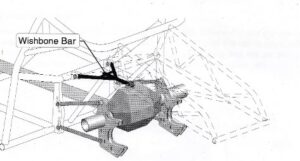On-Track Chassis Limits: Exploring Performance Constraints
On-track chassis limits play a crucial role in determining the performance, handling, and safety of race cars on the track. These limits define the parameters within which teams and drivers must operate to ensure competitive racing while adhering to regulations and maintaining safety standards. Join us as we delve into the intricacies of on-track chassis limits, exploring their impact on racing dynamics and the challenges they present to teams and drivers. We’ll also touch upon the unique characteristics of Winchester Speedway as an example of how track-specific conditions can influence chassis setups.

Understanding On-Track Chassis Limits
On-track chassis limits refer to the maximum and minimum dimensions, configurations, and specifications that race car chassis must adhere to during competition. These limits are established by governing bodies like NASCAR, FIA, and IMSA to ensure fair competition, maintain safety standards, and control costs within the racing industry.
Key Components of Chassis Limits
The main components subject to chassis limits include:
- Wheelbase: The distance between the center of the front and rear wheels.
- Track Width: The distance between the centerlines of the left and right wheels.
- Ride Height: The distance between the ground and the lowest point of the car’s body.
- Weight Distribution: The distribution of weight across the front and rear axles.
- Safety Cage: The structure that surrounds the driver to protect them in the event of a crash.
Impact of Chassis Limits on Racing Dynamics
Chassis limits have a significant impact on the performance and handling characteristics of race cars, influencing factors such as:
Stability and Control
Adhering to chassis limits helps maintain stability and control, allowing drivers to navigate corners and straightaways with confidence and precision. A well-balanced chassis minimizes body roll, enhances grip, and optimizes traction, enabling drivers to push their cars to the limit without compromising safety.
Speed and Acceleration
Chassis limits also play a role in determining a car’s speed and acceleration capabilities. By regulating factors like weight distribution and aerodynamics, chassis limits help teams optimize engine performance and fuel efficiency, allowing for faster lap times and improved overall competitiveness.
Challenges and Constraints
While chassis limits are essential for maintaining competitive balance and ensuring safety, they also present challenges and constraints to teams and drivers.
Balancing Performance and Compliance
Teams must strike a delicate balance between maximizing performance within the confines of chassis limits and complying with regulations. This requires meticulous planning, testing, and adjustments to optimize setups for different track conditions and racing scenarios.
Adapting to Track-Specific Conditions
Each racetrack presents unique challenges and demands that require adjustments to chassis setups. Factors such as track surface, banking, and corner types can significantly impact handling and performance, necessitating changes to suspension settings, aerodynamics, and tire pressures to achieve optimal performance.
Winchester Speedway: A Case Study
Winchester Speedway serves as an intriguing example of how track-specific conditions can influence chassis setups and racing dynamics. Located in Indiana, this high-banked, half-mile oval is renowned for its challenging layout and demanding racing conditions.
The Winchester Challenge
Winchester Speedway’s high banking and tight turns require race cars to maintain high speeds and tight lines to navigate the track effectively. This puts additional stress on chassis components and places a premium on stability, control, and aerodynamic efficiency.
Chassis Adjustments for Winchester
Teams competing at Winchester Speedway often make specific chassis adjustments to optimize their cars’ performance. This may include:
- Stiffer Suspension: To cope with the high banking and maintain stability.
- Aero Tweaks: To maximize downforce and minimize drag.
- Tire Selection: To ensure optimal grip and durability on the abrasive track surface.
Future Trends and Innovations
As racing technology continues to evolve, so too will the regulations and specifications governing on-track chassis limits. Innovations in materials, aerodynamics, and hybrid technologies are likely to influence future chassis designs, offering new opportunities and challenges for teams and drivers alike.
Embracing Technology and Innovation
The integration of advanced technologies such as active aerodynamics, predictive analytics, and real-time telemetry will enable teams to push the boundaries of what’s possible within existing chassis limits, unlocking new levels of performance and competitiveness.
Sustainable Racing and Environmental Responsibility
With an increasing focus on sustainability and environmental responsibility, future chassis designs may incorporate eco-friendly materials and energy-efficient technologies to reduce carbon emissions and minimize the environmental impact of racing.
Conclusion: Striking a Balance for Success
In conclusion, on-track chassis limits are a fundamental aspect of competitive racing, influencing performance, handling, and safety in profound ways. While they present challenges and constraints, they also offer opportunities for innovation, creativity, and strategic thinking. By understanding and adapting to chassis limits, teams and drivers can optimize their setups, tackle track-specific challenges, and maximize their chances of success on race day, whether at Winchester Speedway or any other racing venue around the world.
